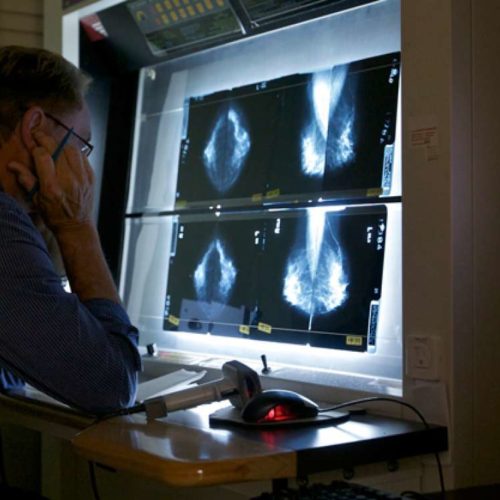Introduction
A new study comparing digital mammography with less expensive film mammography found that the two types of breast cancer screens are equally effective at detecting cancers in most women, underscoring the conclusions reached by a recent iWatch News investigation.
The study, published Monday in Annals of Internal Medicine, compared the accuracy of digital and film mammograms received by 300,000 women aged 40 to 79 in community medical practices between 2000 and 2006; it found that the screening tests performed equally well among these women as a group. However, the study also found that digital mammograms were better at detecting estrogen receptor-negative tumors and cancers in women with extremely dense breasts, both of which are more common in younger women. The study was performed by the National Cancer Institute-funded Breast Cancer Surveillance Consortium.
In contrast with an earlier study that suggested film mammograms perform better for older women, the study found that digital mammography performs equally as well as film mammograms for that group.
“If you are under 50, you should probably have digital,” said Dr. Karla Kerlikowske, a professor at the University of California, San Francisco, and lead author of the study. “If you are over 50, either one would be fine. If someone goes to a clinic and all they have is film, that’s fine. If all they have is digital, that’s fine, too.”
Although the two types of cancer screens perform equally well for most women overall, digital mammograms, which are reimbursed at a higher rate by Medicare and private insurers, have taken over the industry. Earlier this year, iWatch News showed how manufacturers of the digital test equipment used political influence and direct advertising aimed at women to secure increased Medicare reimbursement rates. Those increased reimbursement rates fueled the industry transition to digital mammography despite a lack of science proving the new technology was better for older women.
The iWatch News investigation examined Medicare claims data from 2003 to 2005, and found that digital mammograms increased the cost of breast cancer screening for older women by more than $350 million over that time period.
Speaking about the increased cost of digital mammograms, Kerlikowske said her study did not take cost into account. “That is another thing altogether,” she said.
An accompanying Breast Cancer Surveillance Consortium study published in the same issue of Annals of Internal Medicine found that in 10 years of annual mammograms, more than half of all women without breast cancer will be called back at least once for more testing, and about one in 12 will be referred for a biopsy. Screening every other year for 10 years, however, lowered the rate of false positives by almost a third. Among women who were diagnosed with cancer, the study found that those screened every other year were not significantly more likely to be diagnosed with late-stage cancer than those screened yearly.
“We hope that if women know what to expect with screening, they’ll feel less anxiety if — or when — they are called back for more testing,” said Rebecca Hubbard, the lead author of the study. “In the vast majority of cases, this does not mean they have cancer.”
Read more in Health
Health
Health information technology: Keep it simple
Report says records systems must be easy to operate if dangerous medical errors are to be avoided
Health
ANALYSIS: Republican field shies away from history on insurance mandate
Individually-mandated health insurance began from within the Republican party


Join the conversation
Show Comments